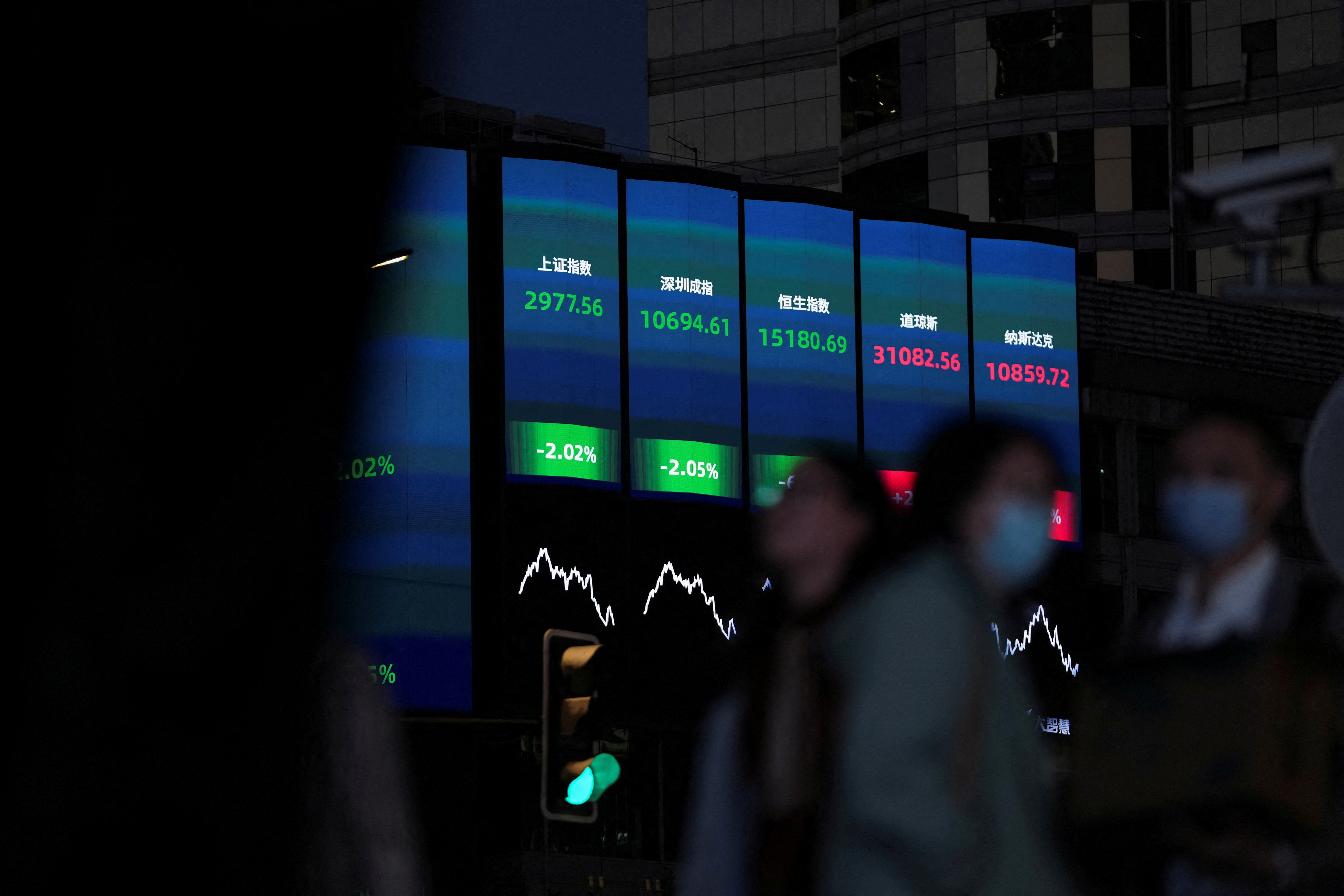
Stocks and oil weakened on Monday as rare protests in major Chinese cities against the country’s strict zero-COVID policy raised worries about management of the virus in the world’s second-largest economy.
MSCI’s broadest index of Asia-Pacific shares outside Japan (.MIAPJ0000PUS) was down 0.6%, after U.S. stocks ended the previous session with mild losses.
Australian shares (.AXJO) lost 0.47% while Japan’s Nikkei stock index (.N225) was down 0.37%.
South Korea’s KOSPI 200 index (.KS200) retreated 1.35% in early trade and New Zealand’s S&P/NZX50 Index (.NZ50) was off 0.4%.
In China, demonstrators and police clashed in Shanghai on Sunday night as protests over the country’s stringent COVID restrictions flared for a third day.
There were also protests in Wuhan, Chengdu and parts of the capital Beijing late Sunday as COVID restrictions were put in place in an attempt to quell fresh outbreaks.
The dollar extended gains against the offshore yuan , rising 0.74% and focus shifts to the open of China’s markets later in the Asian morning.
The COVID rules and resulting protests are creating fears the economic hit for China will be greater than expected.
“A growing list of cities, including those with large populations, have imposed strong restrictions on movement because of a surge in infections, there will inevitably be a negative impact on economic activity from the restrictions on movement,” CBA analysts said on Monday.
“Even if China is on a path to eventually move away from its zero-COVID approach, the low level of vaccination among the elderly means the exit is likely to be slow and possibly disorderly. The economic impacts are unlikely to be small.”
China’s case numbers have hit record highs, with nearly 40,000 new infections on Saturday.
Fears about Chinese economic growth also hit commodities in Asia trade.
S&P 500 and Nasdaq futures both fell, pointing to possible declines in Wall Street later in the day.
U.S. crude dipped 0.25% to $76.08 a barrel. Brent crude fell 0.16 to $83.48 per barrel.
Both benchmarks slid to 10-month lows last week and declined for a third consecutive week
“Mobility data in China is showing the impact of a resurgence in COVID-19 cases,” ANZ analysts wrote in a research note Monday. “This remains a headwind for oil demand that, combined with weakness in the U.S. dollar, is creating a negative backdrop for oil prices.”
Yields on benchmark 10-year Treasury notes rose to 3.6905% from its U.S. close of 3.702% on Friday. The two-year yield , which tracks traders’ expectations of Fed fund rates, touched 4.467% compared with a U.S. close of 4.479%.
The dollar rose 0.22% against the yen to 139.4 . It remains well off its high this year of 151.94 on Oct. 21.
The euro was down 0.2% on the day at $1.0371, having gained 4.94% in a month, while the dollar index , which tracks the greenback against a basket of currencies of other major trading partners, was up at 106.3.
In the United States, a speech by Federal Reserve Chair Jerome Powell in Washington on Wednesday to the Brookings Institute on the economic outlook and the labour market will be closely watched by investors.
Gold was slightly lower. Spot gold was traded at $1750.49 per ounce.

